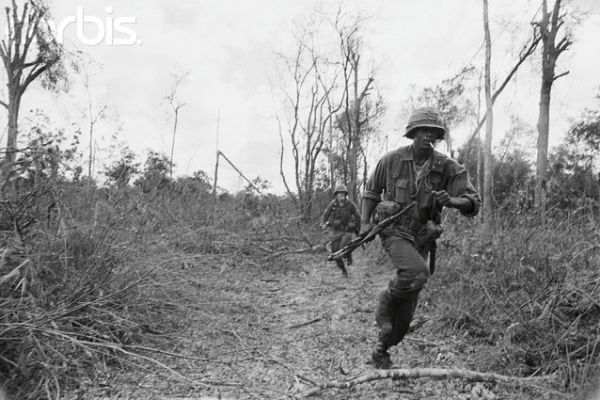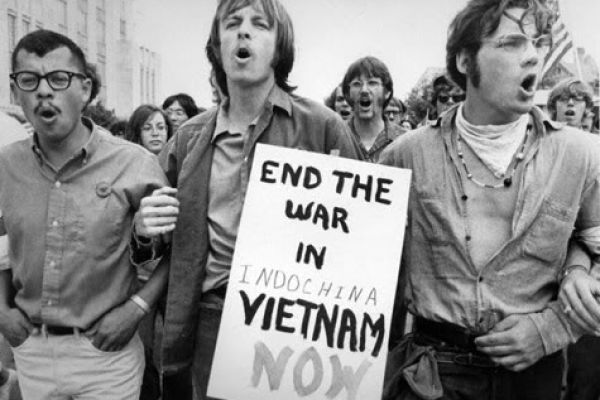In late March, Prince Norodom Sihanouk of Cambodia was ousted as chief of state in a military coup led by Premier and Defense Minister, General Lon Nol. Shortly thereafter, the Lon Nol government cancelled an agreement that had allowed North Vietnam to use the port at Sihanoukville. Hanoi reacted by increasing support to the Khmer (Kampuchean) Communist Party, by then under the leadership of the radical Pol Pot. In April, Nixon authorized the invasion of Cambodia by a joint United States-ARVN force of 30,000 troops for the purpose of destroying Communist bases across the border. Little more than short-term gains were accomplished by the invasion, which resulted in massive protests in the United States, leading to the passage of legislation by Congress requiring the removal of United States troops from Cambodia by the end of June.
In 1971 and 1972, the communists faced some serious problems unrelated to United States offensive operations. The Saigon government began to gain some support in the Mekong Delta because of the implementation of a "land-to-the-tiller" reform program pressed on the Thieu government by Washington in 1970. Almost 400,000 farmers received a total of 600,000 hectares, and by 1972 tenancy reportedly had declined from about 60 percent to 34 percent in some rural areas. In addition, a People's Self-Defense Force Program begun about this time had some success in freeing ARVN troops for combat duty, as United States forces were gradually withdrawn. Although it wasn't clear at the time whether the withdrawal of United States troops would cause the ARVN to crumble instantly, as predicted by the communists, the decisive defeat of an ARVN operation mounted against the Ho Chi Minh Trail in Laos in March 1971 was an early indication. At the time of the ARVN defeat, however, the communists were coping with deteriorating morale and with dwindling numbers of troops; a rising desertion rate and falling recruitment levels had reduced PLAF strength from 250,000 in 1968 to less than 200,000 in 1971.
Both on the battlefield and at the conference table, a stalemate of sorts was reached by mid-1971. In negotiations there was some flexibility, as Washington offered a unilateral withdrawal of United States forces provided Hanoi stopped its infiltration of the South; and Hanoi countered by agreeing to a coalition government in Saigon along with a United States troop withdrawal and to a cease-fire following the formation of a new government. The main point of debate was the retention of President Thieu as head of the South Vietnamese government, which Washington demanded and Hanoi rejected. To break the deadlock, the party leadership in Hanoi turned again to the strategy of a general offensive and uprising. Accordingly, the so-called Easter offensive was launched beginning on March 30, 1972, with a three pronged attack across the DMZ through the A Shau Valley.
The following day the communists attacked the city of Kontum and the provinces of Binh Dinh and Phuoc Tuy, threatening to cut South Vietnam in two. A few days later, three PAVN divisions attacked Binh Long Province along the Cambodian border, placing the capital, An Loc, under siege. In May the communists captured Quang Tri Province, including the capital, which was not recaptured by the ARVN until September. By that time, Quang Tri city had been virtually leveled by United States air strikes. Although the Easter offensive did not result in the fall of the Saigon government, as the communists had hoped, it did further destabilize the government and reveal the ARVN's weaknesses. The costs were great on both sides, however, and by October both Hanoi and Washington were more inclined to negotiate. By then Hanoi had agreed to accept Thieu as president of a future Saigon government in exchange for the removal of United States forces without a corresponding removal of PAVN troops. Thieu's objections to the failure to require the removal of North Vietnamese forces was in the end ignored, and the Agreement on Ending the War and Restoring Peace in Vietnam was signed in Paris on January 27, 1973.





